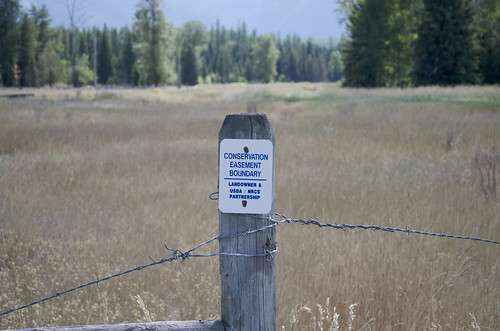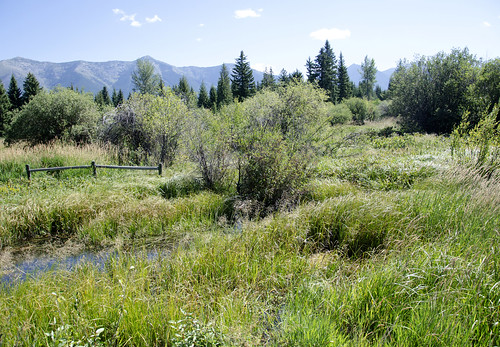
Born in Tacoma, Wash., Thomas “Tom” Nelson remembers spending his summers at his parents’ cabin in Swan Valley, Mont. “My mom would load us all up in the car or on the train and head over,” Tom said. He recalls how excited he was to hear his mom say, “go play!”
“And, boy did we,” he said. “We would pull some nice fish out of the beaver pond on Barber Creek for breakfast and just run freely. That was exciting for city kids.”
But years later, the things that Nelson remembered most about Barber Creek and the beaver dam in Montana would become just that — a memory. “That creek and pond haven’t been too productive lately,” he said. “A lot of the willows that shaded the creek are gone, the water is flowing more slowly, and we can’t fish in the beaver pond like we used to.”
The days of fishing and bathing in the nearby creek are gone, and now he, his family and USDA’s Natural Resources Conservation Service are working to restore the property back to its natural beauty.
Carl and Minnie Nelson bought the property in 1929. When Minnie Nelson died in 1984, the family formed Circle 7N Ranch, Inc. — consisting of Carl and Minnie’s seven children. Now, there are three original shareholders and nine grandchildren who hold shares in property.
Every year, the shareholders hold an annual meeting to make decisions about managing the land. About nine years ago, they were “getting low on funds and looking at ways to get some funds into the property,” said Leigh Nelson, Carl and Minnie’s grandson and the NRCS state irrigation engineer in Washington.
That’s when Leigh Nelson brought to his family’s attention the former Wetlands Reserve Program WRP), a voluntary conservation program that offers landowners the means to restore, enhance and protect wetlands on their property through easements. The 2014 Farm Bill merged WRP with other easement programs, forming the new Agricultural Conservation Easement Program.
“I knew the land had been disturbed in the ‘70s when we dug a drainage ditch along the creek so they could log it,” he said. “So I thought, maybe we could put it into a conservation easement.’”
Soon after, he got to work. His first job: sell the idea of working with the government to the shareholders who were leery.
“It wasn’t a slam-dunk,” Nelson said. But the majority voted to apply for the NRCS easement program.
In 2012, NRCS started the restoration. The agency paid to dig out a shallow water area for wildlife and restored the wetlands by filling in the drain ditch.
“It has opened the door for us with NRCS in Missoula,” he said. He said NRCS is working on a conservation plan that will determine the condition of other parts of the property they are thinking of logging.
“I am going to take this plan to the other shareholders, and we can see if it’s [the property] feasible to log.”
As for Tom Nelson, he just wants the land to return to how he remembered it as a child.
“Hopefully, we will see the return of additional wildlife in the near future,” he said. “If the grandchildren and great grandchildren can enjoy fishing in the creek and beaver dams as a result of this program, boy, that will be great.
“We’re seeing more wildlife back in there. It’s a nicer looking place than it was, for sure.”
This May, NRCS is celebrating National Wetlands Month by sharing the stories of landowners, like the Nelsons, who are working to restore wetlands. To get started with NRCS, visit your local USDA Service Center or www.nrcs.usda.gov/GetStarted.

